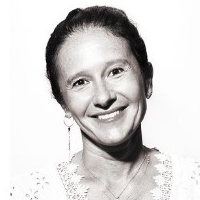Frontier Research in Waters, Air and Wastes
A special issue of Applied Sciences (ISSN 2076-3417). This special issue belongs to the section "Environmental Sciences".
Deadline for manuscript submissions: closed (30 December 2022) | Viewed by 18889
Special Issue Editors
Interests: sustainable and circular wastewater treatment plants; carbon footprint of wastewater treatment plants; resources reuse/recovery; emerging contaminants in water and sludge; microplastics; sludge minimization; advanced oxidation processes; blue-green infrastructures
Special Issues, Collections and Topics in MDPI journals
Interests: drinking water; chemical-physical processes; sewage sludge minimization; thermophilic treatments; WWTP optimization; membrane processes
Special Issues, Collections and Topics in MDPI journals
Interests: water reuse; circular economy; resource recovery; advanced biological wastewater treatment; treatment for sludge minimization; membrane processes; assessment of wastewater treatment plants
Special Issues, Collections and Topics in MDPI journals
Special Issue Information
Dear Colleagues,
This Special Issue aims to collect up-to-date papers that explore the last innovations in waters, air, and waste. Both research papers and review articles are welcome. Short communications of preliminary but significant results and case studies will be considered. Authors are invited to submit original research and review articles focusing on this area. Potential topics include but are not limited to the following:
Waters
Drinking water and wastewater treatment, emerging contaminants, water scarcity, residues of water treatment characterization and disposal, sludge reuse options, wastewater-based epidemiology, waters characterization, advanced oxidation processes, treatment plants optimization, and direct and indirect effects of COVID-19 on quality and treatment of waters and residues.
Air
Air pollution in the urban environment, outdoor and indoor air pollution, traffic and industrial pollution, strategies for reducing air emissions, modelling of the dispersion of atmospheric pollutants, indoor air treatment, effects of lockdown for COVID-19 in urban and rural environment, and influence of air pollutants in COVID-19 spread.
Waste
Solid and aqueous waste characterization, waste collection and treatment, recycling, material reuse, energy recovery, direct and indirect effects of COVID-19 on solid waste quality, and feasible disposal options.
Dr. Marco Carnevale Miino
Prof. Dr. Maria Cristina Collivignarelli
Dr. Alessandro Abbà
Guest Editors
Manuscript Submission Information
Manuscripts should be submitted online at www.mdpi.com by registering and logging in to this website. Once you are registered, click here to go to the submission form. Manuscripts can be submitted until the deadline. All submissions that pass pre-check are peer-reviewed. Accepted papers will be published continuously in the journal (as soon as accepted) and will be listed together on the special issue website. Research articles, review articles as well as short communications are invited. For planned papers, a title and short abstract (about 100 words) can be sent to the Editorial Office for announcement on this website.
Submitted manuscripts should not have been published previously, nor be under consideration for publication elsewhere (except conference proceedings papers). All manuscripts are thoroughly refereed through a single-blind peer-review process. A guide for authors and other relevant information for submission of manuscripts is available on the Instructions for Authors page. Applied Sciences is an international peer-reviewed open access semimonthly journal published by MDPI.
Please visit the Instructions for Authors page before submitting a manuscript. The Article Processing Charge (APC) for publication in this open access journal is 2400 CHF (Swiss Francs). Submitted papers should be well formatted and use good English. Authors may use MDPI's English editing service prior to publication or during author revisions.
Keywords
- drinking water
- wastewater
- advanced oxidation processes
- air pollution
- solid waste
- aqueous waste
- recycling







